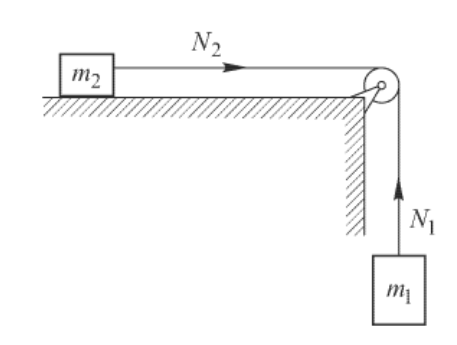Unit 2.1 Systems in AP Physics 1: An In-Depth Guide
What is a System in Physics? 🌏
In physics, a system is defined as an object or a collection of objects under study. These objects are considered to have no internal structure unless otherwise specified. When analyzing a system’s dynamics, such as its acceleration or the forces acting upon it, a system approach is often utilized. This approach involves applying Newton’s Second Law of Motion:
Key Characteristics of a System
- Boundaries: A system has clearly defined boundaries that separate it from its surroundings. These boundaries can be physical (e.g., a sealed container) or conceptual (e.g., defining forces on a moving car).
- Energy and Matter Exchange: Systems can be:
- Open: Exchanges both energy and matter with surroundings.
- Closed: Exchanges only energy but not matter.
- Isolated: Exchanges neither energy nor matter.
- Equilibrium: Systems can be in equilibrium (no net change over time) or dynamic equilibrium (changing but tending to return to a state of equilibrium).
Example: Consider a pendulum in motion. The pendulum and its string represent the system, while the surrounding air and gravitational forces from Earth define the environment.
Types of Systems
1. Closed Systems
A closed system does not exchange matter with its surroundings but can exchange energy. An example of a closed system is a sealed container of gas. The gas molecules inside can interact with one another and with the walls of the container, but they do not exchange matter with the external environment.
2. Open Systems
Open systems exchange both matter and energy with their surroundings. A good example is a car engine, which takes in fuel (matter), burns it to produce energy, and releases exhaust gases (matter) into the environment.
3. Isolated Systems
An isolated system does not exchange matter or energy with its surroundings. While true isolated systems are rare in the physical world, an example could be a thermally insulated container designed to minimize heat exchange.
4. Conservative and Non-Conservative Systems
- Conservative Systems: The total mechanical energy (sum of kinetic and potential energy) remains constant.
- Non-Conservative Systems: Energy is not conserved due to external forces like friction or air resistance.
Note: In AP Physics, systems are often simplified by treating constituent parts as a single object.
Example Problems
Example Problem 1
Scenario: A box of mass 10 kg is placed on a frictionless incline connected to a pulley. The pulley has a mass of 2 kg, and the tension in the rope is 50 N.
What is the system?
The system consists of the box, the pulley, and the rope.What are the external forces?
External forces include the gravitational force acting on the box and the normal force from the incline.Calculate the acceleration using Newton’s Second Law:
Since the incline is frictionless, use gravitational force and net force equations accordingly.
Find the normal force:
If the incline angle is 30 degrees, the normal force is:
Example Problem 2
Question: What is a closed system? Provide an example.
A closed system is one that does not exchange matter with its surroundings but can exchange energy. An example is a sealed container of gas. While the gas molecules can move and interact, they remain confined, exchanging no matter with the external environment.
Properties of a System 🌟
Systems have properties derived from the interactions and properties of their constituent parts. In AP Physics, a macroscopic system can be simplified when modeling, treating it as a single entity if internal forces and changes are negligible.

Example: A block of wood on a table acts as a macroscopic system. Newton’s First Law states that it remains at rest unless acted upon by an external force.
Question: What happens if you apply a force to the block? Consider how factors such as mass, force magnitude, and force direction influence the acceleration and velocity of the block.
Practical Application of System Dynamics
Free-Body Diagrams
Free-body diagrams illustrate all forces acting on a system, showing both magnitude and direction. This tool is essential for analyzing forces and predicting system behavior, often forming the basis for Newton’s Second Law calculations.
Systems in Motion
The net force acting on a system determines whether it is in equilibrium or undergoing acceleration. Identifying and analyzing systems correctly is crucial for solving physics problems effectively.
Conclusion
Understanding systems in physics provides a framework for analyzing forces, motion, and energy interactions. By defining and examining a system’s properties, you gain deeper insight into the underlying principles governing dynamics.







